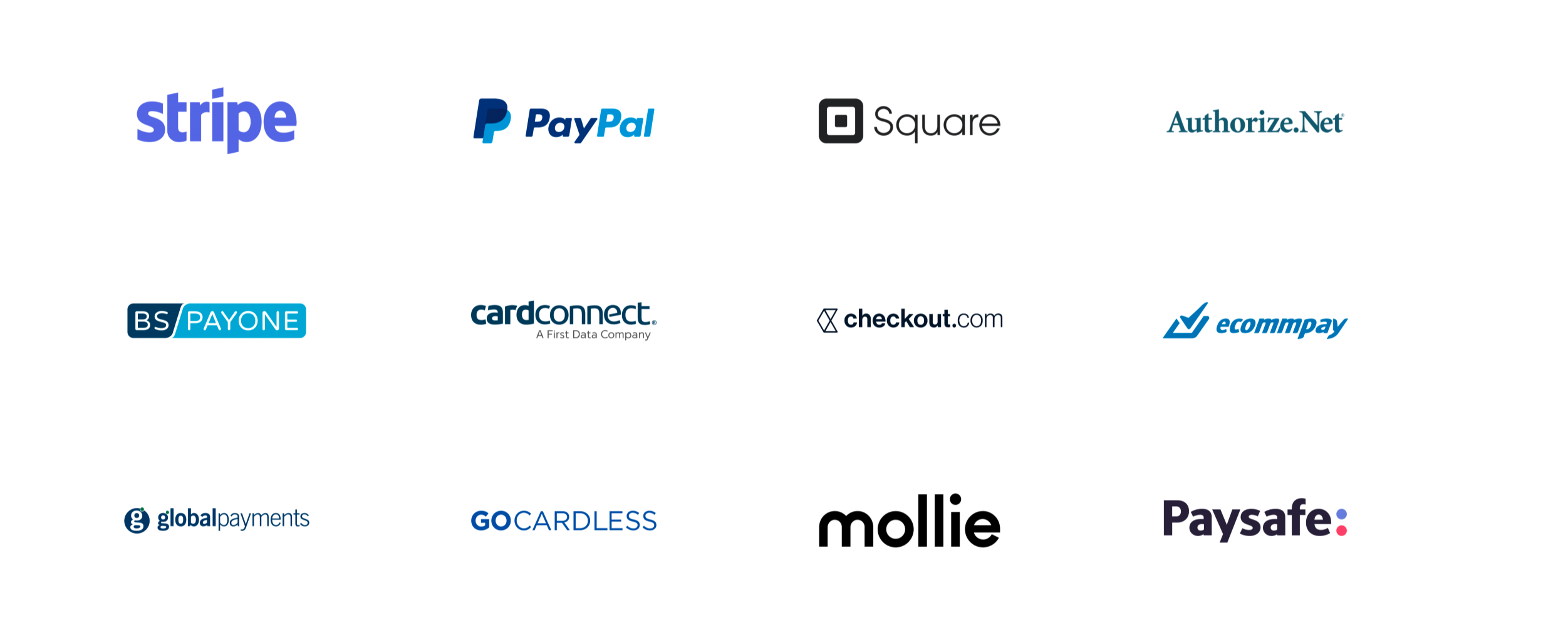
Payment gateway aggregation is where several payment gateways are accessed through a single API or code library. The benefit being that the developer does not need to learn and integrate multiple APIs to access the required payment gateways.
Assuming you know what a payment gateway is, the next question is —
Why would you ever need to access multiple payment gateways?
The typical use case is that your software has customers who sell things, that might be via a shopping cart, invoice or provide call centre services. Payment gateways allow those customers to process payments. But each customer might want to use a different payment gateway. If you want to acquire as many customers as possible you will need to have multiple payment gateways integrated because each one of your customers will have gateway preferences based on their geographical location, price sensitivity, what they sell, service offered and features required.
“Losing 60% of potential customers”
We know of platforms that have chosen to only work with one payment gateway and they tell us that this has resulted in them not being able to acquire 60% of the prospects that come through.
Not all payment gateway aggregators are the same. Payment gateway aggregators range from open-source code libraries to full payment suite platforms (like Shuttle). Whilst the code libraries can be a seemingly quick way to access many gateways, it can be a false economy…
What should I look for in a payment gateway aggregator?
Firstly, reliability and support are key questions if you’re going to rely on third-party code. You will likely need the following in your system if you’re thinking about payments:
- How will customers connect the payment gateway (onboarding)?
- How will end customers checkout and trigger the payment gateway?
- What will the checkout experience be?
- Will you need to be PCI compliant to offer payments in your software?
- How will you handle all the different error messages?
- How will you catch all the different statuses via webhooks?
- Will you store transaction data?
- How will you handle refunds, chargebacks, auths etc?
A deeper dive into the different types of aggregators
Active Merchant and Omnipay are open source libraries maintained by third-party developers. These libraries have lots of payment gateways connected which is certainly a positive, another is that they are written in accessible programming languages and are quick to get started.
The negatives are:
- They are only connectors, they do not homogenise how payment gateways work, therefore:
- You have to build a lot of things around them, like onboarding, checkouts etc.
- They will take the user to a different screen to checkout
- They do not provide PCI compliance, you will still need to consider the relevant processes
Proprietary payment gateway aggregators are typically aimed at single merchants and not software (SaaS) platforms, therefore their toolsets are limited when scale is required. They may not offer key components like views of transactions, onboarding or monetization possibilities and so extra work has to be undertaken. These proprietary systems will charge you a fee to use them, which might be money well spent if they offer considerable cost and time savings on in-house development. Plus they will likely provide PCI compliant processes.
Final considerations
If you need payment gateway aggregation, you’ll be likely weighing up the cost-benefit of the various options. At the end of the day, you will have to know a bit about payments and each payment gateway that your customers want to use, at least from an integration point of view. But the degree of how much you need to know varies greatly depending on what option you choose. The other thing to consider is…
Do you want to make money from the transactions that run through your system?
If you do you will have to either add fees to each payment, which is off-putting for your customers and only possible with a handful of gateways. Or you will need to have commercial agreements with payment providers to receive a commission on transaction volume, this is no easy feat. Shuttle offers the ability to make money on payments by using a billing method and revenue share program.
Building payment integrations in-house
If you want to do this then it will require you to build a team of technical, commercial and support personnel. Plus go through PCI compliance, which could cost anywhere between a few thousand dollars to a few million. If you’re reading this article you’ve probably already decided this route is expensive and not for you. I mean, Shopify doesn’t even do this!
Use open-source payment libraries
Initial development time is reduced dramatically but these libraries are not sophisticated and have the potential to break or fall behind standards if not maintained. They fall short in many areas like onboarding and a single checkout. What if you need to support a multi-gateway checkout?
Use a proprietary payment aggregator
A good option if you want to limit your effort and compliance overhead, go to market quickly and maximise the number of customers you can onboard. Sometimes the aggregators offer the ability to route payments for various reasons. But there might be some missing pieces, especially if you’re building a SaaS platform with many users and want to monetize payments.
Use Shuttle – proprietary payment aggregator
Shuttle is actually much more than a payment aggregator, the platform was designed to help SaaS companies turn payments into a winning feature. Go to market quickly around the globe, monetize payments and reduce personnel burdens. Shuttle makes payment gateways work the same from an integration standpoint: simplifying the connectivity, onboarding, checkout and status of payments. Enable multiple payment gateways in a single checkout, as well as certain payment methods to increase end customer conversion.



